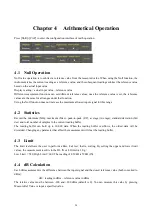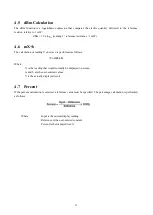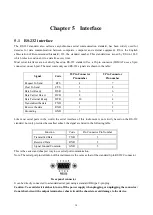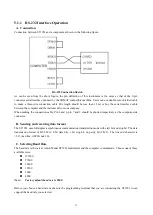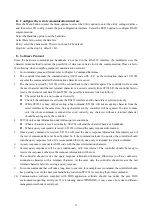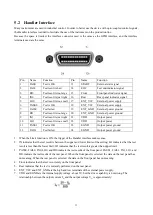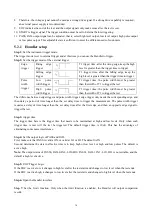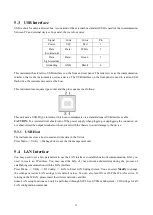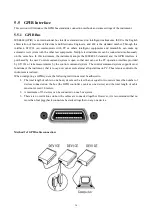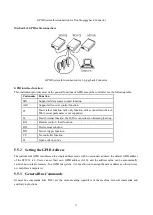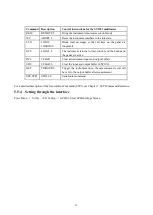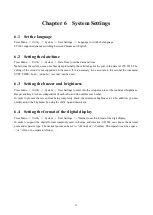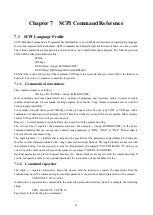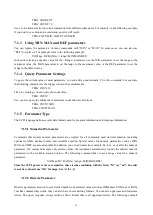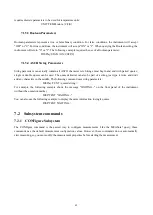
41
TRIG: SOUR EXT
TRIG: COUNT 10
Use a colon and a semicolon to link commands from different subsystems. For example, in the following example,
if you don't use a colon and a semicolon, an error will result:
TRIG:COUN MIN;:SAMP:COUN MIN
7.1.3 Using MIN, MAX and DEF parameters
You can replace the parameters of many commands with "MIN" or "MAX". In some cases, you can also use
"DEF" to replace it. For example, refer to the following example:
VOLTage: DC:RANGe {<range>|MIN|MAX|DEF}
Instead of selecting a specific value for the <Range> parameter, use the MIN parameter to set the range to the
minimum value, the MAX parameter to set the range to the maximum value, or the DEF parameter to set the
range to the default value.
7.1.4 Query Parameter Settings
To query the current value of most parameters, you can add a question mark (?) to this command. For example,
the following example sets the trigger count to 10 measurements:
TRIG: COUN 10
Then, by sending, you can query the count value:
TRIG: COUN?
You can also query the minimum or maximum count allowed, as follows:
TRIG: COUN? MIN
TRIG:COUN? MAX
7.1.5 Parameter Type
The SCPI language defines several data formats used for program information and response information.
7.1.5.1 Numerical Parameter
Commands that require numeric parameters are accepted for all commonly used decimal notation, including
optional symbols, decimal points, and scientific notation. Special values for numeric parameters such as MIN,
MAX, and DEF are also acceptable. In addition, you can add units (for example, M, k, m, or u) after the numeric
parameter. If a command accepts only certain values, the instrument automatically rounds the entered numeric
parameters to the available accepted values. The following command asks to set a range value for a numeric
parameter:
VOLTage: DC:RANGe {<range>|MIN|MAX|DEF}
Since the SCPI parser is not case sensitive, there is some confusion with the letter "M" (or "m"). In order
to not be confused, use 'MA' for mega. Use 'u' for ‘μ’.
7.1.5.2 Discrete Parameter
Discrete parameters are used to set a limited number of parameter values (such as IMMediate, EXTernal, or BUS).
Just like command keywords, they can also have short and long formats. You can mix uppercase and lowercase
letters. The query response always returns a short format that is all uppercase letters. The following example


